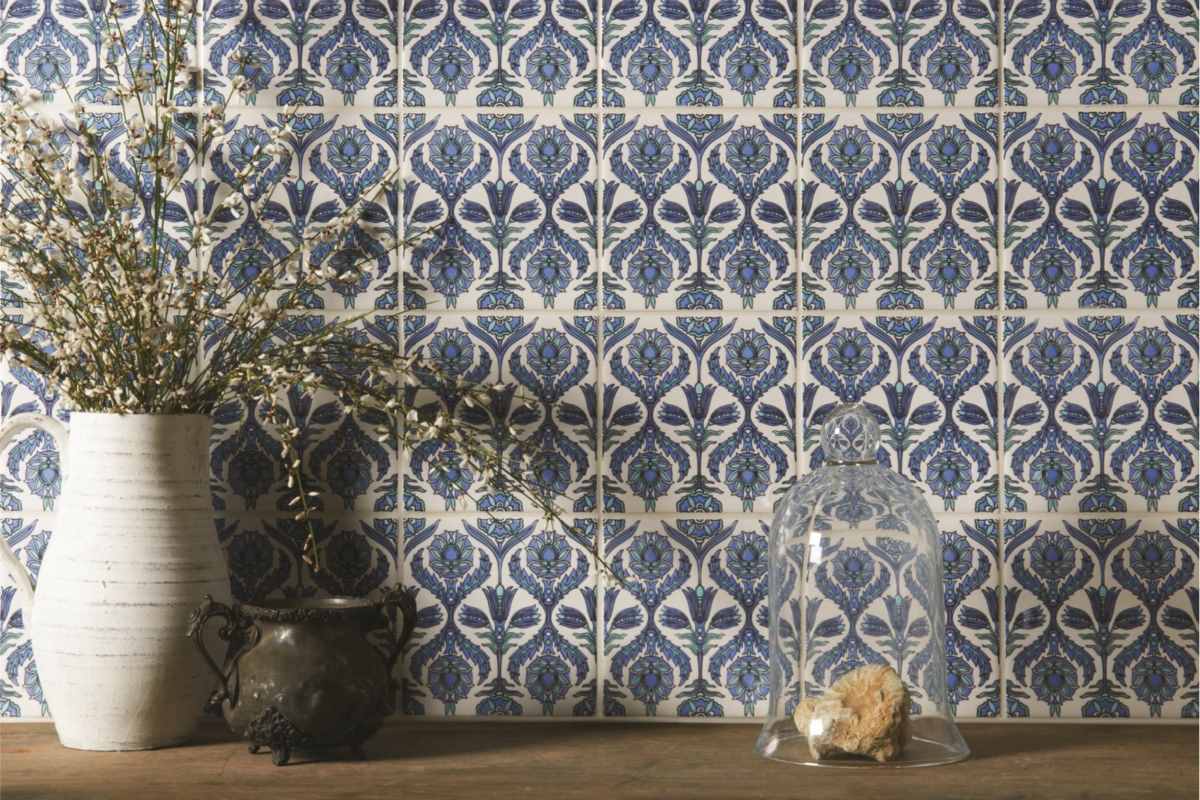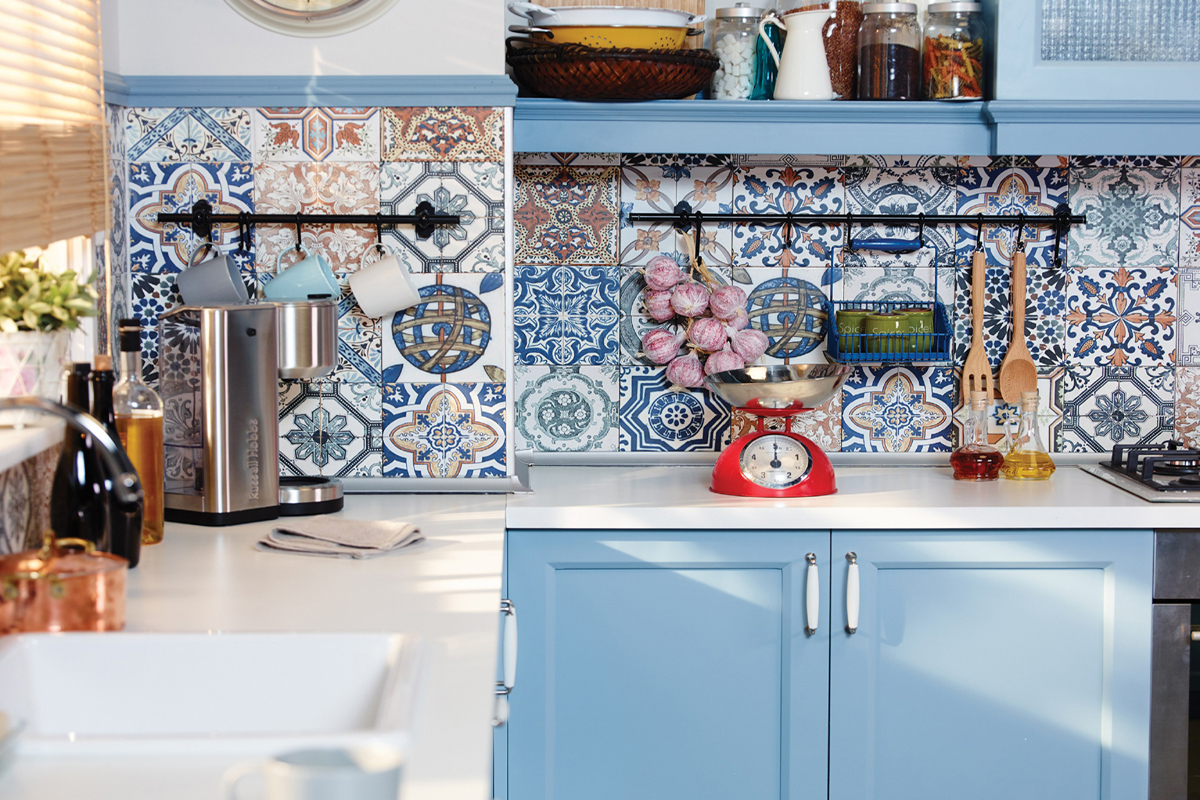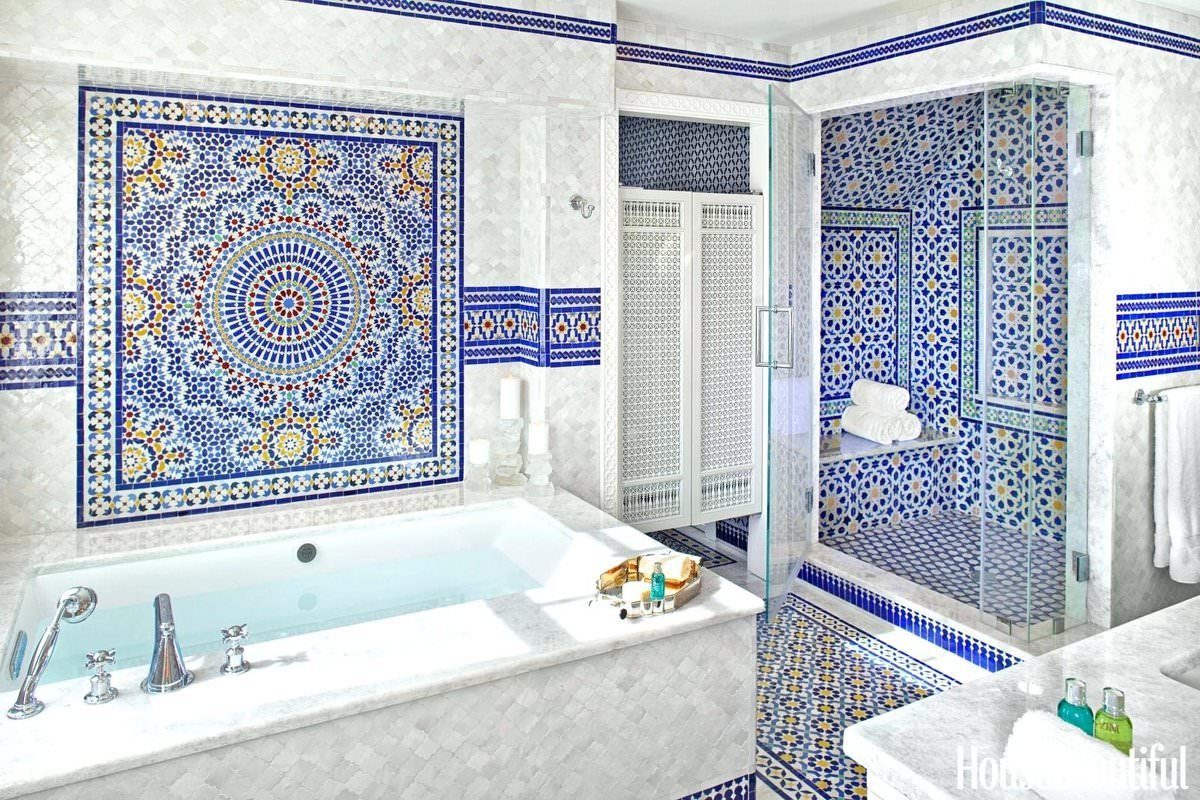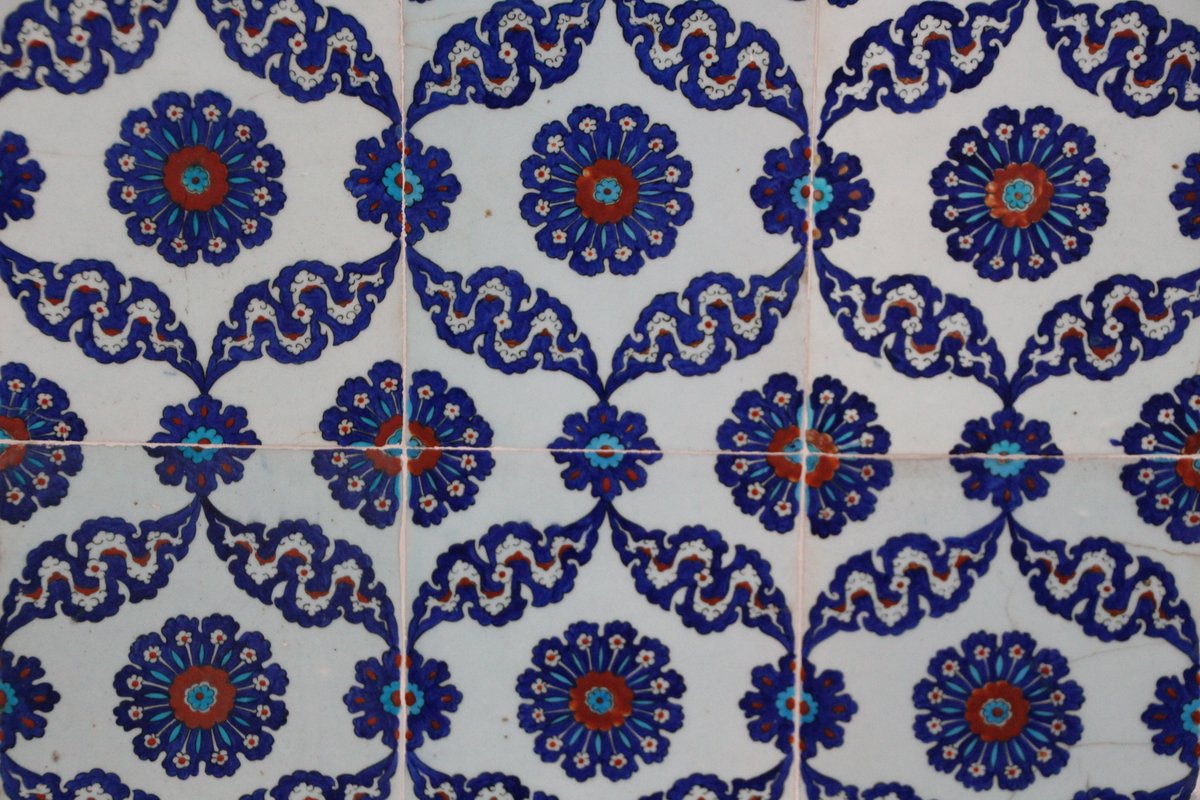The Mediterranean tiles, ah! No other term can conjure up the warm summer sun, carefree beach days, effortless al fresco eating, vintage charm, and informal elegance all at once! Here are some decorative ideas that make your feelings up.
It makes sense that the Mediterranean continues to inspire artists, designers, and craftspeople in practically every genre. Why not try to replicate a key Mediterranean-style tile look in your home, working your way up from the floor up, if you also find yourself daydreaming of rustic Maisons de maitre in Provence, sparkling white Grecian villas or desert-chic Moroccan riads but know you’ll never actually get to own the real thing?
Mosaics in the manner of Rome
Since ancient Rome, Mediterranean people have always had a penchant for elegant dwellings! The more affluent Roman households could afford to commission beautiful mosaic designs to decorate their floors and walls; the larger and more lavishly detailed the mosaic, the more it revealed about the owners’ level of wealth.
For example, ivy was utilized as a symbol of longevity. Mosaic tiles were frequently used as a collage to show scenes from fables and mythology or with animal and flower themes that had particular symbolic connotations. Smaller mosaics were also employed as store signage; a fishmonger, for instance, would have had a little fish mosaic above the entrance to his shop.

Today, sheet mosaics come in a huge variety of styles, with countless finishes and effects to pick from. Mosaic tiles are still highly popular. But if you want to resemble the ancient Romans truly, you’ll need to exercise your creativity by creating a unique statement mosaic image that you’ll inlay into your floor.
However, there are also a lot of fantastic artists that will create amazing personalized works for your home. Proficient DIYers can do this themselves. A prime example is this magnificent trompe l’oeil fishpond mosaic created by artist Gary Droste.
Caustic/cement tiles with patterns
Depending on how they were created, these bright, patterned tiles can technically be encaustic tiles or merely cement tiles. The fact is that tiles with lovely floral and geometric themes that seem to be inlaid into the tile itself are incredibly desired and have been used extensively in Europe for generations, so that’s really not our problem.
Encaustic tiles were, in fact, extremely trendy up until the 1920s, according to the team at Concrete Cottage: “They were viewed as ultimate high-end flooring that decorated the palaces of the Tsar, the mansions of the Côte d’Azur, Gaudi’s Barcelona, and Berlin’s official buildings.”
It’s a style that is currently seeing a huge comeback, and with the incredibly wide variety of colors and patterns available, it’s ideal if you want to have maximum effect on your floor and makes a highly unique statement.
Encaustic tile has a retro mood generally, but you can intensify it by choosing a geometric cubic pattern and pairing it with angular, minimalist furnishings; similarly, intentionally faded floral patterns combine well with rustic decor. On the other hand, choosing a patchwork of encaustic tiles is a unique design option that is growing in popularity if you can’t decide which of these lovely patterned tiles to select.

Terracotta hexagonal tiles
I had the good fortune to visit a friend’s vacation home in the southern French city of Perpignan a while back, and ever since then, I’ve been absolutely obsessed with the stunning hexagonal terracotta floor tiles that were installed throughout their lovely property!
Along the Mediterranean, you may also find these magnificent Mediterranean tiles in Spain, Italy, and North African nations, but they are particularly common in southern France. As far back as the late Roman Empire, they have undoubtedly existed.
They were first brought to the Americas in the 16th century. The distinctive honeycomb tiles, called “tomettes” in France, have come to be associated with the Provençal town of Salernes, where they have been produced since 1830.
The good news is that you don’t have to travel all the way to France to find hexagonal terracottas because they are also widely available in the US! Additionally, unless you specifically want to, you don’t have to match them only with the French Provençal farmhouse style.
As seen by the beautifully renovated Parisian apartment below, where old and new are thoughtfully combined with reclaimed hexagonal tiles, steel, wood, glass, voile, exposed stone, and minimalist furniture, hexagonal terracotta tiles work equally well with contemporary interior design. It’s wonderful!

Moroccan/Moroccan tiles with an arabesque design
The arabesque tiles that are most closely linked with Moroccan or Moorish decor are something you might want to look at if you like the idea of shaped tiles like the hexagonal ones above. Although there are many Moroccan design options available and a variety of Moroccan tile shapes, the arabesque tile is a particularly unique option because of its curved lines, which give any space a really distinct and enticing exotic and sensual atmosphere.
Although arabesque-shaped tiles, often referred to as lantern tiles, are frequently used as detail wall tiles, such as for a splashback in a kitchen or bathroom, they are also a viable alternative for flooring since they offer texture and interest without overpowering the space.
Additionally, producers like Villa Lagoon are now manufacturing them from sturdy cement, which makes them a great option for flooring and enables a large array of color options. And as the team at Villa Lagoon succinctly put it, “this very adaptable tile complements many types of interior design styles.” “This classic Moroccan-shaped tile can look contemporary or ancient depending on your color selections and installation techniques.”

Checkered black and white pattern
However, checkerboard composite stone tiles have been present for a very long time and were also a very well-liked option in southern Mediterranean tile flooring, particularly in the years following World War II when new structures were being built to replace those that had been lost. The black and white checkerboard floor is a common sight, but it has actually been around for a very long time. Most people probably identify it with the all-American 50s diner.
However, when done effectively, a checkerboard floor may also express the kind of confident elegance you’d associate with sophisticated Mediterranean floor design. Checkerboard floors are a really strong style and not for the faint of heart because they do have a tendency to dominate the room. If you enjoy the style but are hesitant to use it throughout your house, a safe bet is to use it as a feature in your foyer, kitchen, or bathroom.
It would be best if you thought about utilizing tiles composed of premium materials like marble and granite, or really glossy porcelain tiles, to achieve the enhanced checkerboard floor look. Combining a checkerboard floor with elegant furniture and a minimalist or monochromatic color scheme, like in the art deco bathroom below, definitely elevates the look to a more mature and sophisticated level. A touch of class can also be added by putting a monochromatic border around the room’s perimeter and placing the checkerboard on a diagonal axis.











Your comment submitted.